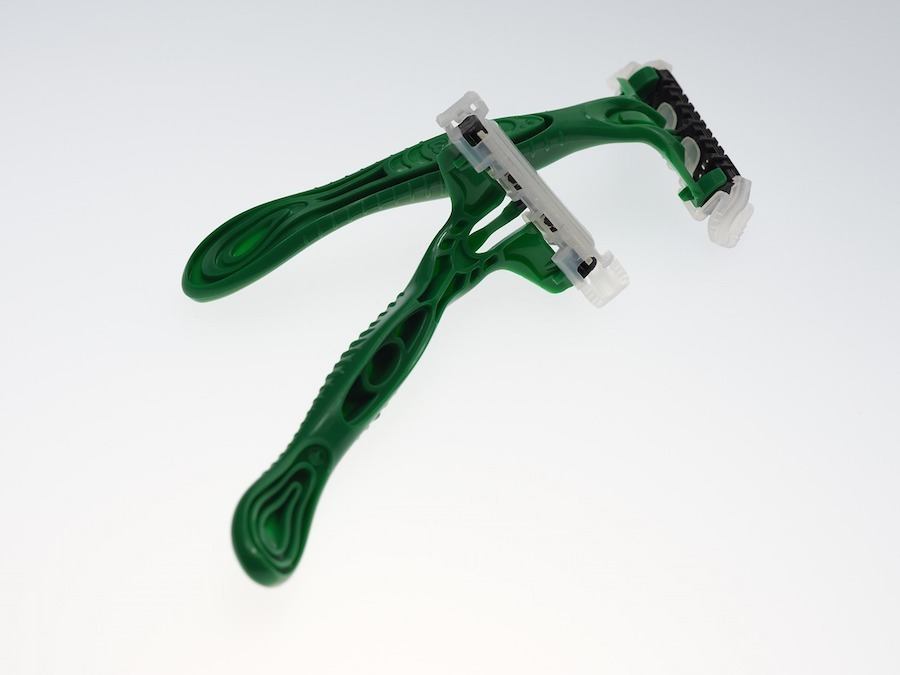Can Hirsutism Be Cured Permanently?

“Can hirsutism be cured permanently?” That’s a question that millions of women would like to know. The truth is, there is no simple answer to this question. When discussing treatment options for hirsutism, it can get a little complicated.
The Mayo Clinic defines hirsutism as a condition of unwanted, male-pattern hair growth in women. Excessive amounts of dark, coarse hair grow on areas such as the chin, face, chest, and back. For many women, this can be a troubling occurrence and can have detrimental effects on body image and self-esteem. It’s estimated that 5-10% of women are affected by hirsutism, so not unsurprisingly, a large number of women are interested in finding out the true answer to this question.
To consider if hirsutism can be cured permanently, it’s helpful to first understand what causes it.
What Causes Hirsutism?
Women naturally produce “male” hormones known as androgens. When secreted in small amounts, androgens play important roles in the female body. However, if androgen production becomes abnormally high, symptoms like a deepening voice, balding, acne and hirsutism may develop.
So what causes a high androgen level? Well, a number of medical conditions can raise the amount of androgen that a woman produces. These include:
- Polycystic ovary syndrome (PCOS) – The most common cause of hirsutism.
- Cushing’s syndrome – This is a hormonal imbalance where the body has excess hormone production.
- Congenital adrenal hyperplasia – An inherited condition that is also caused by an abnormal production of hormones
- Medications – Some medications like danazol, corticosteroids and fluoxetine can cause hirsutism.
In a small number of cases, the cause of hirsutism will remain unknown despite medical testing. This is called idiopathic hirsutism. The gradual growth of coarse body hair is the only symptom women with this condition may experience.
Treatment of Hirsutism
Treatment of hirsutism can best be described as falling under one of these 3 categories:
- Temporary hair removal
- Permanent hair removal
- Permanent hair reduction (this is different from permanent hair removal)
Permanent hair removal or a permanent cure for hirsutism is possible in cases where the development of hirsutism was due to an external factor. For example, hirsutism caused by a medication side effect can be permanently resolved once the medication is stopped or the dosage lowered.
The temporary treatment of hirsutism or a temporary cure for hirsutism is a much more common scenario. When hirsutism is caused by an underlying medical condition like Cushing’s syndrome, it is generally treated with a medication that lowers the amount of androgen produced by the body. However, hirsutism can be kept at bay only as long as treatment continues and the excess androgen is suppressed.
The last category is permanent hair reduction. Permanent hair reduction is not the same thing as permanent hair removal. Hair reduction is the long-term reduction of the number of hairs that regrow in an area after it has been subjected to a treatment regime. Even with the latest techniques, most patients will experience some re-growth a few years after receiving treatment.
To date, there are only two hair removal methods that are known to permanently reduce hair. These are: Laser hair removal and electrolysis. They’re also the most effective techniques that we have.

Hair Removal Methods
When determining what hair removal methods to use, studies show that after ruling out treatable causes, the most effective treatment for hirsutism is the use of a combination of therapies. It’s recommended that women consider using a combination of physical hair removal techniques (plucking, waxing), creams, medical treatments and more substantive treatments like electrolysis and laser hair removal. This approach appears to offer the most promising and comprehensive method of long-term hair reduction.
The Most Common Treatment Therapies
Plucking, shaving, and waxing – Many women try hair removal methods such as plucking, shaving, and waxing. These methods are associated with their own set of side effects like scaring, folliculitis or skin irritation. The results are immediate but unfortunately, very temporary.
Medication – If there is an underlying condition present that causes hirsutism, systemic therapies may be used to help reduce hair growth. This includes the use of oral hormonal contraceptives and other medications like spironolactone. The treating doctor will tailor the treatments to each woman’s requirements with regards to pregnancy, health status and personal preference. Because the average life cycle of a hair follicle is 6 months, it may take this length of time before a significant difference in hair growth is noticed.
Electrolysis – This is a more permanent method of hair reduction and with repeated treatments, the efficacy ranges from 15 to 50% permanent hair loss. However, results are extremely variable from person to person.
Laser therapy – Having gained widespread popularity in past two decades, laser hair removal can achieve permanent reduction of hair (not permanent removal). Although expensive, laser hair removal is effective, faster, and less painful than electrolysis. With appropriate laser therapy, there is up to a 70% reduction in hair density in treated areas, with remaining hairs becoming thinner in diameter within 3-6 months of treatment.
Whatever treatment option you settle upon, the key is to be patient. All therapies take time to work and it can be months before noticeable, long-term improvements are experienced. Make sure to discuss all of your concerns with your doctor. A two or three-pronged “attack” appears to be the best way to tackle the problem of hirsutism and it offers the greatest chance of success.
